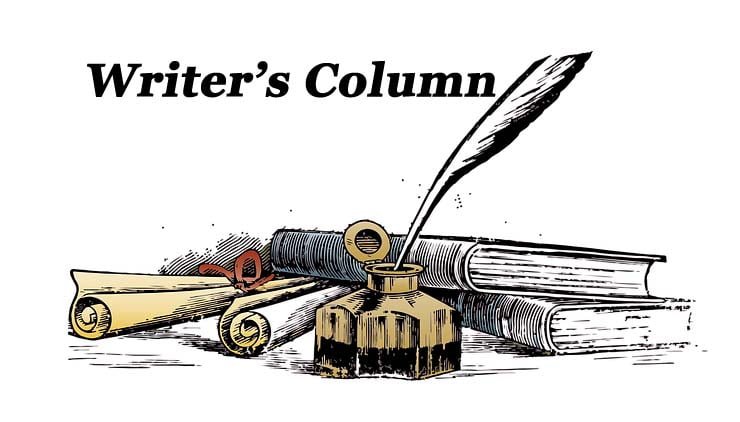The reservation issue is not only a political issue but also an economic, ethical, efficiency and manpower issue. If Meghalaya is aiming for an over-ambitious 10-billion-dollar economy, it must have the right manpower with capability. Revision of reservation can also address this as an aspect of efficiency-manpower, which is a critical-mass for economic development. In my limited understanding, I think every public policy requires revision in light of new circumstances, evidence and data.
Reservation policy requires a much-needed revision by also bringing both representatives of the tribes to a table for discussion, debate and re-look on the criterions, justifications and rationalisations. Government should be playing a neutral position; this reservation is not for the benefit only for the government but for the contesting groups. Reservation is not the property of Government, it is the enshrined rights of the citizens, and the government duty is only to ensure that constitutional obligations, equity, justice and rationality must prevail.
Why is the government not open for debate and creating, generating an environment of reconciliation, debate, discussion by listening to different viewpoints. The accusation made by some party that this issue will create ‘ethnic tensions’ as what happened in Manipur can only come from a mind that has lost the capacity to think but rely on emotions, a mind that understands and looks at correlations as causation. This is the same mindset that exhorts that Covid equals death. Actually, true uncorrupted unadulterated science has proven otherwise.
Coming back to the reservation issue, If the government can play a constructive role as the true and real caretaker of the State and also as the upholder of justice and constitutionality, it should standout steadfastly that there is merit and justification for the revision of State reservation policy, even if there is an iota of inconsistency, for the sake of efficient ethical governance the policy must be revise. True government/governance must allow that Truth, Facts, Logic, Rationality should prevail. Only the weak will stand on the ground of appeasement and emotions. Let’s face the wrath of the truth and reality now.
The short-sighted accusation by certain sections of political parties and political conspiracy theorists (theorists in the pedestrian sense) that the issue for the revision of reservation in Meghalaya is an election-oriented issue by the VPP is a baboon lampoon. If we go by this logic and infantile reasoning, even governance in this day and age can also be considered as an election ploy.
Recently the government hosted the all-parties meeting for roster. We heard that it is only a power-point presentation, and all came out in agreement except two political parties – VPP and KHNAM. Majority of the public and electorates are also in the dark about what goes on in the meeting. Are we under the Roman Empire or the British Empire that decides and dictates the polity and our children’s future? Is this all-parties meeting only a display that something has been done, because the government of the day is good at cosmetic programmes and image building?
Another interesting episode after the power-point presentation is the most awkward utterances of the other political parties. If I am not mistaken, they simply said (as we saw in news media) they are ‘satisfied’ with the power-point presentation without any explanation or justifications on how they came to this conclusion. We also know that there will be a committee to look into the roster. Again, who will decide the organisation and the formation of this committee? Will this committee be equally represented by contesting parties?
If we are living in a true democracy, under a Constitution that guarantees, freedom of expressions, check and balances, accountability, transparency, then we ought to demand that the actual Roster Presentation should be put in the public domain/government website without any tampering or redaction. The formation of the committee must be based on certain principles of ethics, justice and expertise. Furthermore, reservation is the foundation for the roster. You can’t quickfix the roof (Roster) without addressing or correcting the foundation (Reservation).
Governance and public policy making that may affect the public at large or cause disharmony or happiness must be discussed in the open, seeking constructive opinions, perspectives and analysis, it needs the eyes and ears of the citizens. This is an issue that will build or derail the future. Statistically, there are more brilliant minds outside the portals of government or governance.
On the question of Backwardness for Reservation: Backwardness is a misnomer to denote any state of underdevelopment, in this day and age where socio-economic analysis has advance and data are available and can be generated, there are ways of looking and conceptualisation on the degree of influences and determinants of underdevelopment. Again, all socio-economic analysis is not absolute; they are an approximation of reality. Human society is a dynamic entity, also time-space changes. Data too can be interpreted in many ways for certain objectives.
In the 1970s, where socio-economic analysis and conceptualisation was not that advanced as today, the term backwardness (trending term) was used as a collective or representative term to describe a state of underdevelopment. In place of ‘backwardness’, the most appropriate terms to measure and describe under-development are ‘deprivation’ and ‘accessibility’. Again, the degree of deprivation and accessibility will vary. Historically, the term backwardness is a colonial framework, a Whiteman’s dichotomy, between civilization (levels of technology, knowledge) and the periphery of an unruly, untouched world of natives, barbarians.
Backwardness is a term that blurs and hides the nuances of reality. Even in the truly anthropological perspectives, no tribe is considered backward, if viewed from the context of ‘cultural relativism’, the left intellectuals are fond of using cultural relativism as a prism. The term Ethnocentrism, Xenophobia also emerged from this angle of perspective, that all communities, tribes have their own identity, intelligence etc therefore; you can’t use the same yardstick for judging cultures and ethnicity.
In the context of Meghalaya, I don’t think it is justifiable to use the yardstick of backwardness as a measure for job reservation. In Meghalaya people (tribes) are not backward, they are deprived. This deprivation has a cultural, political and economic context. After 50 years of statehood, what have the public representatives done to their own constituencies? Where have all the schemes, investment gone to improve and uplift the community, tribe? Isn’t this also the cause of underdevelopment (or backwardness)? The cause for backwardness or deprivation is not the failure of reservation, but the un-ability of the people to utilise effectively the allocated reservation, which again can be connected to a state of underdevelopment (deprivation, accessibility).
On Population based Reservation: If we acknowledge the past, the reservation policy that we have is also a British legacy. The British look at the hills as protective areas, the reason is both Anthropological and Administrative. Then after, we have the Constitution that laid down the grounds for reservation, this is not to appease but to make sure that Justice and Equality flourish.
Normally, the logical way to enunciate a proportionate reservation policy is population data based. Population is a dynamic concept; every population has its own size, growth rate, dynamics, and characteristics. Examining populations on the basis of percentages and absolute numbers can send different messages to two people. This framing of percentages must take into account the growth rate, as we know Meghalaya population growth rate especially in the rural areas is one of the highest, as per 2011 census India decadal (2001-2011) growth rate was 17.68, Meghalaya Decadal growth rate (2001-2011) was 27.95.
Recently, I visited a nearby village about 28 kms from Shillong for a minor project work related to population studies, in this study area, we still found that the growth rate is high, and majority of population are much younger, this shows the high dependency ratio (economic burden or dividend), if you look at the population data of Meghalaya you will find the same. This only strengthens the fact that the growth rate is high.
Again, if we look at the percentage of urban and rural population in Meghalaya, about 80 per cent are still in rural areas where the majority are Scheduled Tribes and the growth rate is high. As an example, if the size of population in a region A is 1000 with a population growth rate of 2 per cent annually, the population added 20 annually, If the size of population in zone B is 3000 but with the same population growth rate (2 per cent) population added will be 60.
How many of our citizens will understand this fact and how many of our representatives will be able to grasp this magnanimity and the depth of reservation based on population. If we care for equity, distributive justice, rationality, facts and perspective planning, we can’t ignore the realities of population. A just policy must stand.
(The views expressed in the article are those of the author and do not reflect in any way his affiliation to any organisation or institution)


























